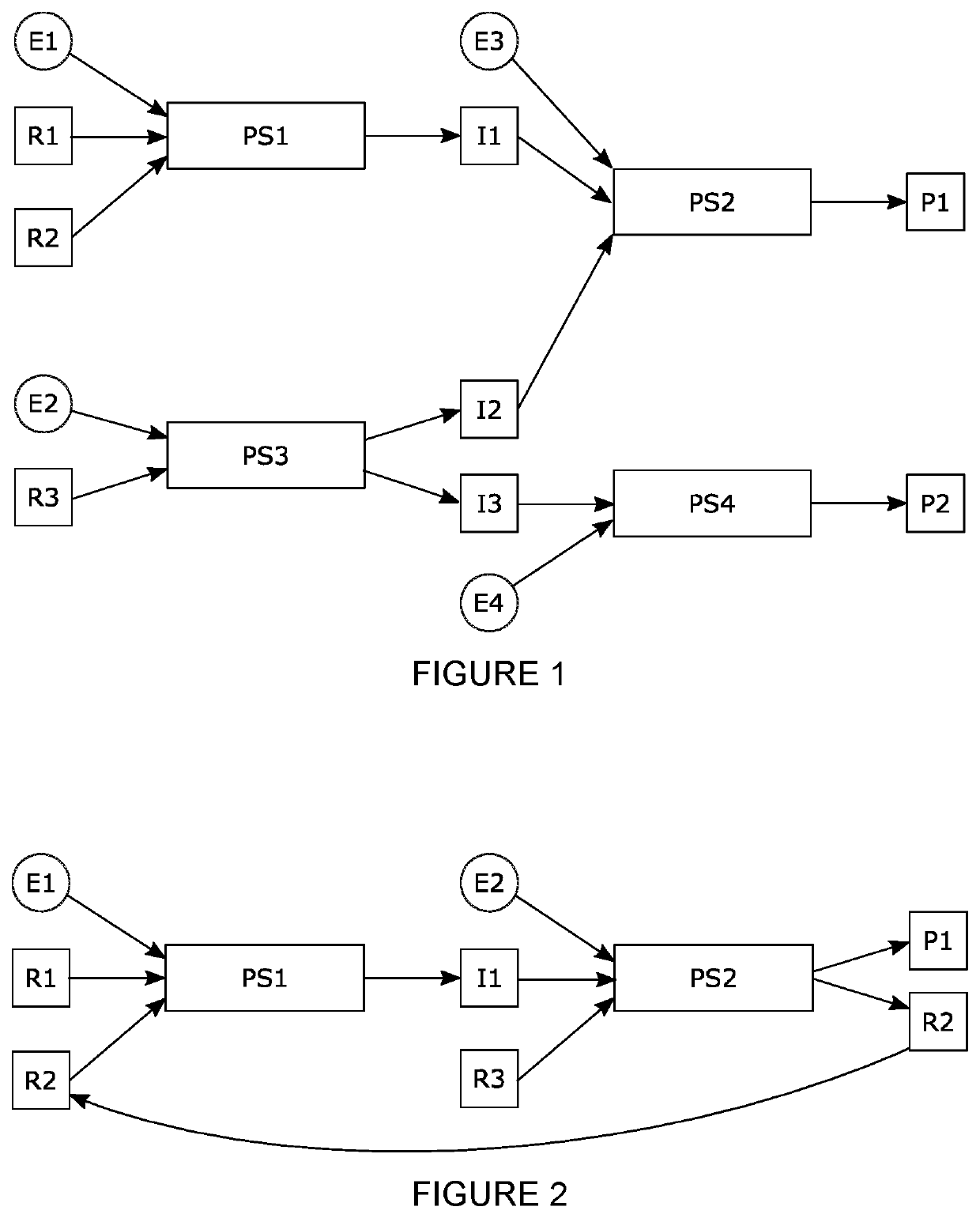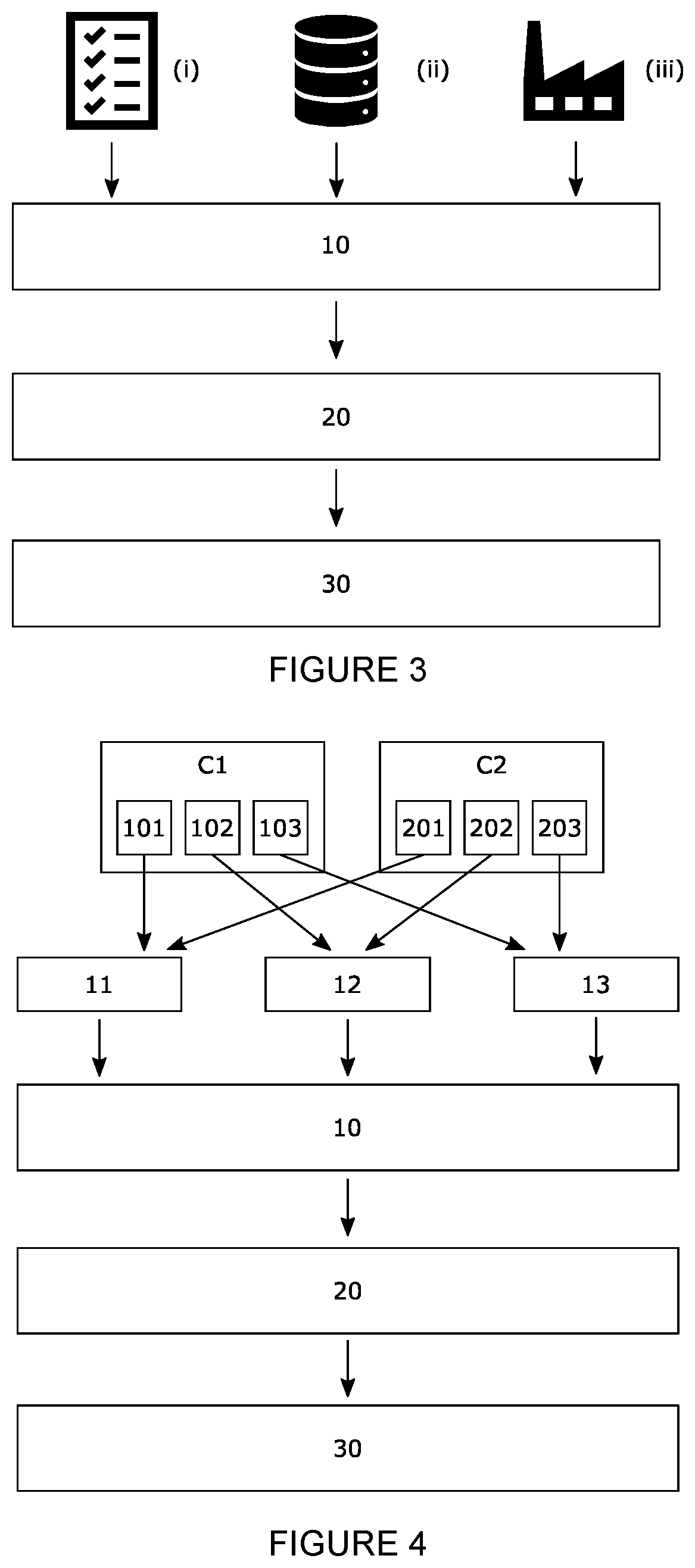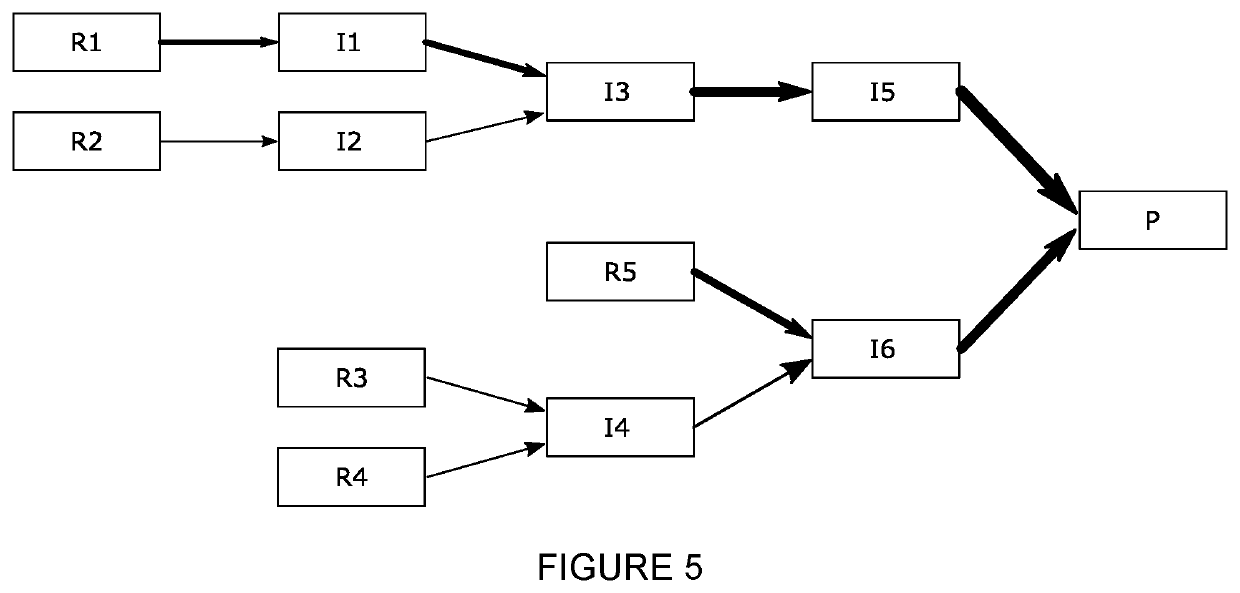Method for Determining the Carbon Footprint of a Product in Production Processes of a Production Plant
- Summary
- Abstract
- Description
- Claims
- Application Information
AI Technical Summary
Benefits of technology
Problems solved by technology
Method used
Image
Examples
Embodiment Construction
[0021]In some embodiments, a method according to the present invention determines the carbon footprint of products. In the context of the present invention, “carbon footprint” relates to the amount of greenhouse gases emitted or removed in a production process of a production plant. The carbon footprint may relate to the total amount of greenhouse gases emitted or removed in the production process e.g. from extracting natural resources to the product as it leaves the production plant. In the context of the present invention, the carbon footprint may not include any greenhouse gas emission later on in the lifetime of a product. For example, for a car the carbon footprint in the context of the present invention is the amount of greenhouse gases emitted to produce the car, but not the emissions caused by using the car once it has left the production plant. The amount of the carbon footprint is typically expressed as carbon dioxide equivalents, so the amount of carbon dioxide with the s...
PUM
 Login to View More
Login to View More Abstract
Description
Claims
Application Information
 Login to View More
Login to View More - R&D
- Intellectual Property
- Life Sciences
- Materials
- Tech Scout
- Unparalleled Data Quality
- Higher Quality Content
- 60% Fewer Hallucinations
Browse by: Latest US Patents, China's latest patents, Technical Efficacy Thesaurus, Application Domain, Technology Topic, Popular Technical Reports.
© 2025 PatSnap. All rights reserved.Legal|Privacy policy|Modern Slavery Act Transparency Statement|Sitemap|About US| Contact US: help@patsnap.com



